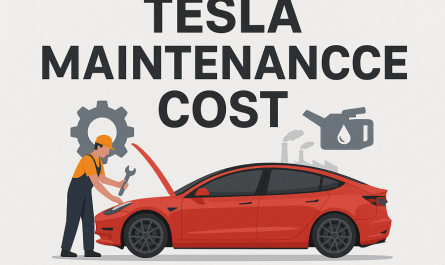Understanding the Link Between Mileage and Insurance Rates
Your annual vehicle mileage powerfully shapes your car insurance costs. The more you drive, the more time you spend on the road, which typically increases the chances of accidents or claims. Insurance companies closely analyze your reported mileage as a risk assessment tool. Simply put, more miles driven correlate to a higher risk, leading to increased insurance premiums.
By reporting your average mileage to your insurer, you provide crucial information that determines your premium and may qualify you for special options like AARP car coverage plans, which can benefit certain driving profiles, such as retirees or those driving less frequently.
These risk calculations stem from extensive claims data showing that people driving greater distances each year are generally more likely to be in collisions. Insurers may charge substantially higher rates if you exceed a certain mileage threshold, aiming to balance potential payouts with collected premiums.
Conversely, low-mileage drivers statistically face fewer hazards on the road. For these motorists, low claims frequency often translates into lower premium costs. This is why reporting accurate figures can help you unlock substantial insurance savings over time.

Defining Low, Average, and High Mileage
Insurance providers categorize policyholders based on miles driven annually. Understanding how mileage is classified can help you anticipate your premium options:
- Low Mileage: Less than 7,500 miles per year—Drivers in this bracket are generally considered the least risky and often qualify for the best rates and discounts.
- Average Mileage: 7,500 to 14,000 miles annually—Most Americans fall into this group and pay standard premium rates.
- High Mileage: More than 15,000 miles per year—Considered higher risk, resulting in higher premiums due to greater exposure.
As these classifications show, insurance companies use your mileage to group customers according to the likelihood of a claim. For long-distance commuters or those with frequent travel obligations, understanding where you fall in these categories can help you make proactive decisions about coverage and potential savings.
Impact of High Mileage on Insurance Premiums
High-mileage drivers are statistically more vulnerable to accidents and vehicle wear. According to Clark.com, raising your annual mileage from 5,000 to 20,000 miles can increase your premium by an average of 9%. This increase exists because more driving time directly corresponds to greater chances of filing a claim.
Wear and tear on your vehicle also plays a role in determining risk—insurers factor in that heavily used vehicles may be less reliable, further boosting the odds of breakdowns or accidents. Regularly reviewing your driving patterns and monitoring your mileage can help you avoid unexpectedly high insurance rates.
Benefits of Low Mileage on Insurance Costs
On the other hand, driving less means spending less. Low-mileage drivers can enjoy notable premium discounts. Some insurance companies, for instance, provide low-mileage discounts if you fall under a certain threshold, like 7,500 miles per year. These discounts are incentives for driving less, reducing risk, and saving money in fuel and maintenance.
If your lifestyle or employment situation has changed—such as transitioning to remote work—updating your insurer about reduced mileage could make you eligible for lower premiums. According to a report by Insure.com, low-mileage policyholders can save hundreds each year compared to those who drive farther.
Usage-Based Insurance: A Tailored Approach
Usage-based insurance (UBI) is an innovative way for drivers to control insurance costs based on real-time driving habits rather than just estimated mileage. These programs use telematics devices or mobile apps to track your miles, driving speed, braking, and more. Safe, low-mileage drivers often receive significant premium reductions in exchange for sharing this data.
Not every program fits every lifestyle, but a UBI policy could dramatically reduce your costs if you consistently drive less than the average person. It’s crucial to check the terms, the tracking frequency, and privacy policies to ensure such a plan aligns with your preferences and needs.
Accurate Mileage Reporting: Why Honesty Matters
Correct mileage reporting is not just about savings but about maintaining your policy’s validity. Underreporting your mileage can result in denied claims or the abrupt cancellation of your policy if discrepancies are discovered. Insurers may check your odometer during claims processing or review maintenance records as verification.
Honest communication ensures your insurance accurately reflects your driving habits, safeguarding you from coverage issues and helping you access discounts when you qualify.
Strategies to Manage Mileage and Reduce Premiums
To keep mileage—and premiums—in check, consider adopting these straightforward strategies:
- Carpooling: Sharing rides with colleagues or friends significantly reduces individual annual mileage.
- Public Transportation: Opting for buses, trains, or subways can reduce the miles you drive yourself.
- Remote Work: Telecommuting eliminates daily commutes, often driving down both mileage and insurance premiums.
- Trip Planning: Combining errands or appointments into one outing instead of multiple trips can reduce your annual miles.
Implementing these habits isn’t just financially savvy—it also positively impacts the environment by minimizing one’s carbon footprint.
Final Thoughts
Mileage is a major player in determining your car insurance rates, and with a few strategic adjustments, you can unlock considerable savings. Be proactive: track your driving, report it accurately, and ask your insurer about programs and discounts designed for your habits. With the right approach, you can manage your premiums and ensure you’re fully protected every mile.


